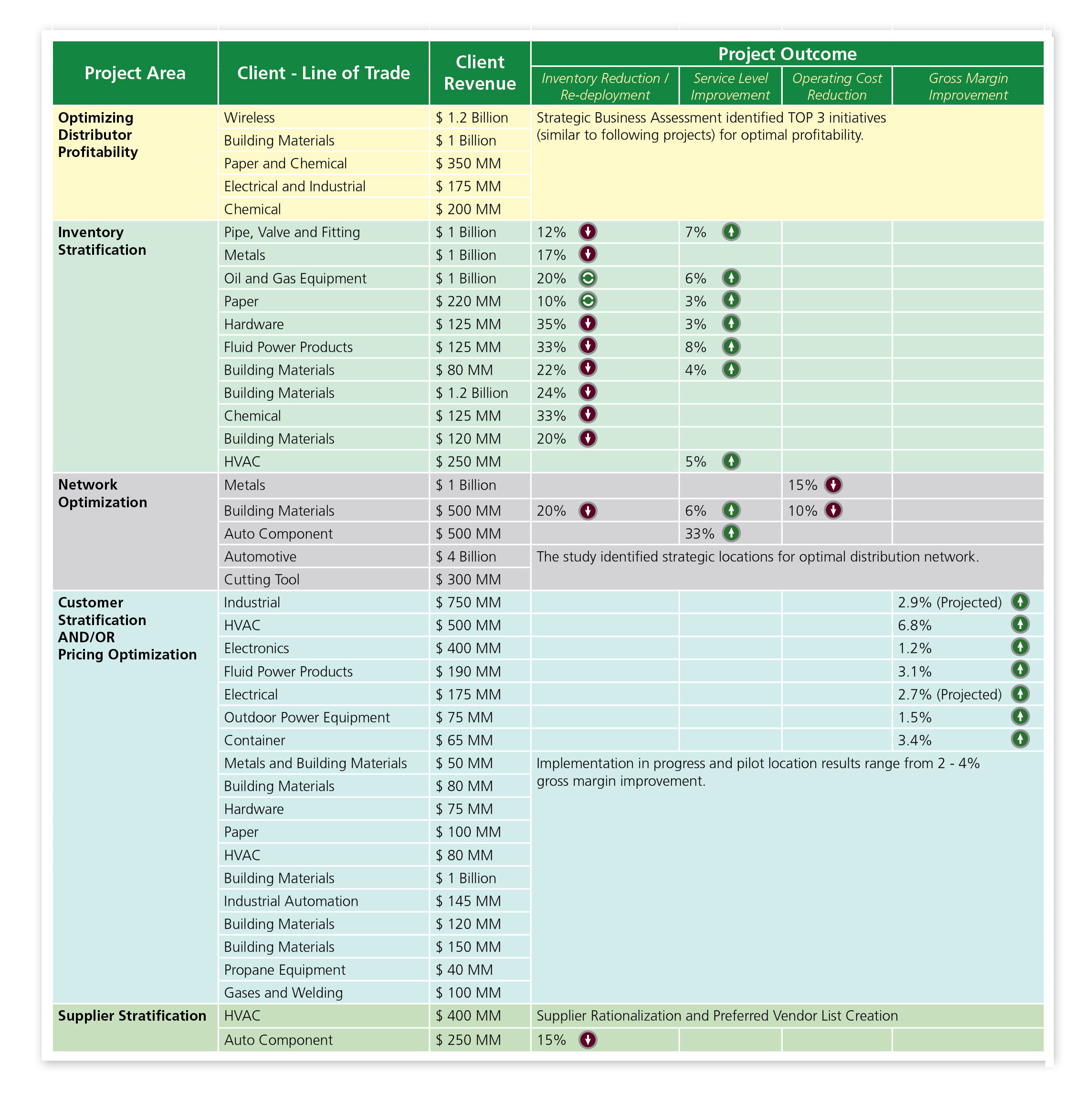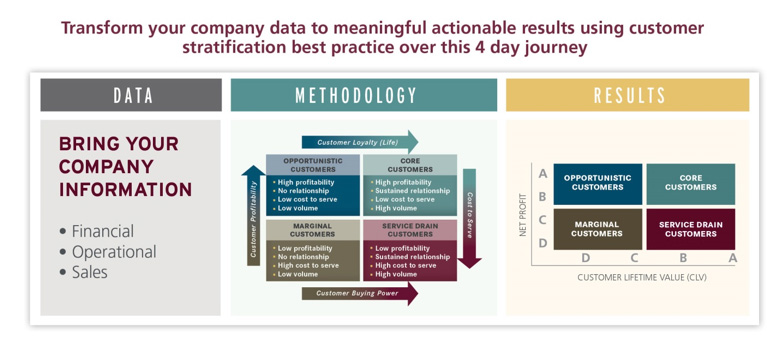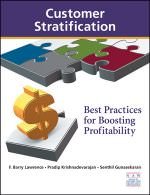Overview
Customers are the lifeblood of any business, so it is vital for companies to understand their customers and their effects on inventory, pricing, and the bottom line. Customers are often dismissed as exogenous — unable to be retained effectively or categorized and managed in any useful way. But proper stratification methods allow for improved customer relations and subsequent retaining of customers, optimization of sales forces, and more accurate pricing that results in improved margins.
We have found the information from the customer stratification model to be very useful, pragmatic, and quickly applicable into our business. We have realized some early wins and anticipate a greater positive impact in our business.”
– Art Kostaras, President (Past), Womack Machine Supply Company
‘Customer Stratification’ has the power to enable us to transform our company from being product-driven to customer-driven. It has helped us understand our customers in greater
detail, enabling us to optimize our selling resources, which will result in an improved ROI.”
-Don Schalk, President and COO, C.H. Briggs Company
Challenges
- Misaligned Sales Force Deployment
- High Cost-to-Serve (CTS)
- High Customer Attrition
- Underpricing or cost-plus pricing
Solutions
- Multi Criteria Stratification
- Buying Power
- Profitability
- Loyalty
- Cost-to-Serve
- Combination Customer Stratification
Benefits
- Optimal Sales Force Deployment
- Improved Net Margins
- High Customer Retention
- Competitive Value Proposition





